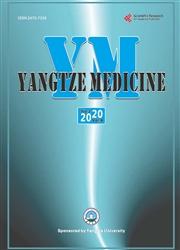Tolosa Hunt Syndrome: Current Diagnostic Challenges and Treatment
引用次数: 2
Abstract
Tolosa-Hunt syndrome (THS) is an uncommon diagnosis with an incidence of nearly 1 to 2 cases per million hallmarked by the presence of painful ophthalmoplegia (PO) due to a granulomatous inflammation (GI). Diagnostically, the major THS challenges encountered are owing to the exclusion of other GI presenting conditions necessitating multi-specialization consultations. This article presents uniquely advances in diagnosis and challenges encountered attempting to exclude THS mimics, details on physical examination and laboratory investigations have been incorporated. Tolosa Hunt MRI protocol (contrast-enhanced MRI), restricted diffusion and CISS MRI have lately proved to be precise investigations for THS diagnosis and follow up, on the contrary, number of false-negative/positive MRI diagnoses appears to be rising, hence proposed that MRI or biopsy shouldn’t be mandatory criteria for diagnosis as opposed to IHS 2018 guidelines. Despite corticosteroids being the cornerstone therapy for THS, there are controversies concerning the better administration route, optimal dosage, and therapy longevity, through case reports, high dose IV mPSL of 500 mg BID for 3 days, followed with maintenance dose of prednisone 60 mg resulted in the earliest recovery, hereafter standardized guidelines are required. Alternatively, infliximab (300 mg infusion), azathioprine, methotrexate, and acupuncture can be used, farther studies are required to appraise the effectiveness and their safety. On the other side, microsurgery can be utilized for GI evacuation however associated risks of permanent CN VI palsy have been stated, nonetheless, GKRS can be employed when contraindication or corticosteroid intolerability exists though the hazard of late malignancy is a drawback.Tolosa-Hunty综合征:当前的诊断挑战和治疗
Tolosa-HHunt综合征(THS)是一种罕见的诊断,其发病率接近百万分之一至二,其特征是由于肉芽肿性炎症(GI)而出现疼痛性眼肌麻痹(PO)。从诊断角度来看,THS遇到的主要挑战是由于排除了其他需要多专业咨询的胃肠道疾病。本文介绍了诊断方面的独特进展和排除THS模拟物所遇到的挑战,并结合了体检和实验室调查的细节。Tolosa Hunt MRI方案(对比增强MRI)、限制性扩散和CISS MRI最近被证明是THS诊断和随访的精确研究,相反,假阴性/阳性MRI诊断的数量似乎在增加,因此提出MRI或活检不应作为强制性诊断标准,而不是IHS 2018指南。尽管皮质类固醇是THS的基石疗法,但在更好的给药途径、最佳剂量和治疗寿命方面仍存在争议,通过病例报告,500 mg BID的高剂量静脉注射mPSL持续3天,随后维持剂量的泼尼松60 mg可使THS最早恢复,此后需要标准化指南。或者,可以使用英夫利昔单抗(300mg输注)、硫唑嘌呤、甲氨蝶呤和针灸,还需要进一步的研究来评估其有效性和安全性。另一方面,显微外科手术可以用于胃肠道排空,尽管已经指出了永久性CN VI麻痹的相关风险,但当存在禁忌症或皮质类固醇不耐受时,可以使用GKRS,尽管晚期恶性肿瘤的风险是一个缺点。
本文章由计算机程序翻译,如有差异,请以英文原文为准。
求助全文
约1分钟内获得全文
求助全文

 求助内容:
求助内容: 应助结果提醒方式:
应助结果提醒方式:


